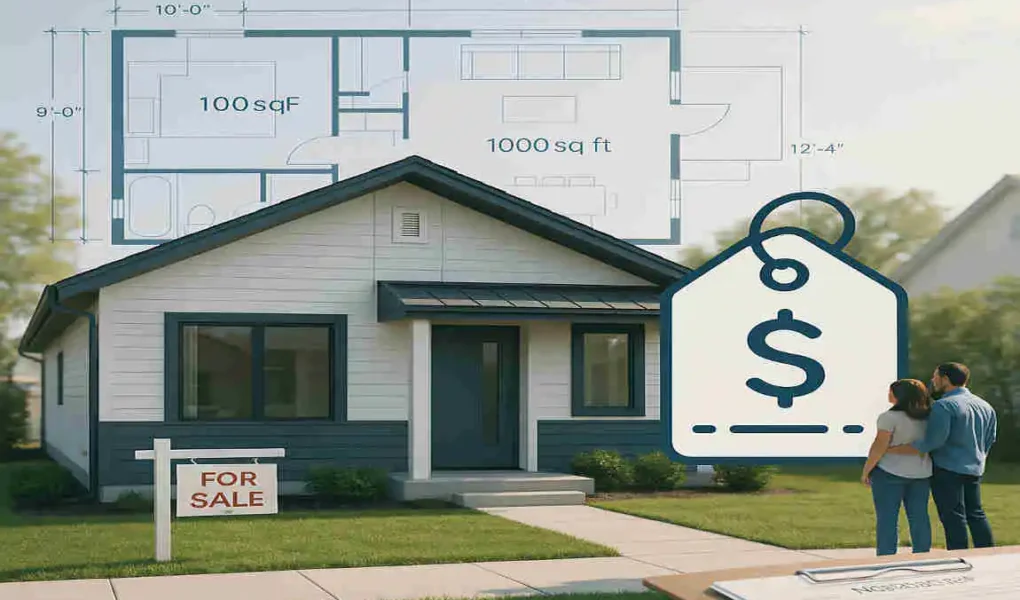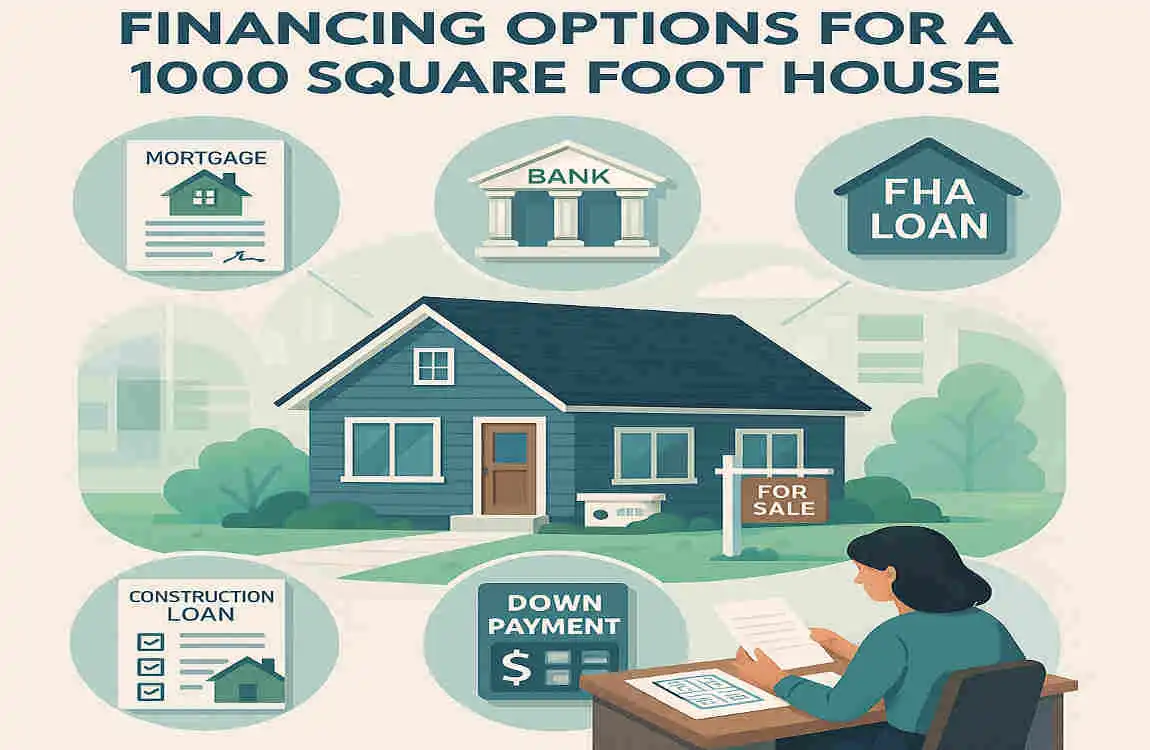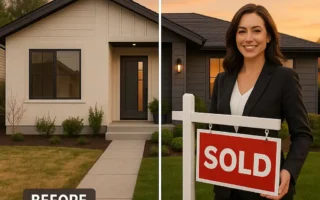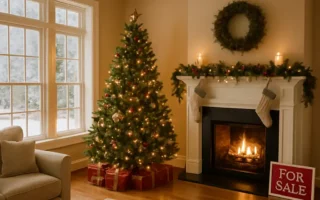Buying or building a 1000 sq ft house is a popular choice for many due to its manageable size and affordability. However, the cost to build a 1000 sq ft home can vary greatly depending on factors like location, materials used, labor costs, and design complexity. This guide offers an overview of expected price ranges in 2025 and practical tips to help you plan and manage your budget effectively. Understanding these elements can empower you to make informed decisions and maximize value in your home investment.
What is a 1000 Sq Ft House?
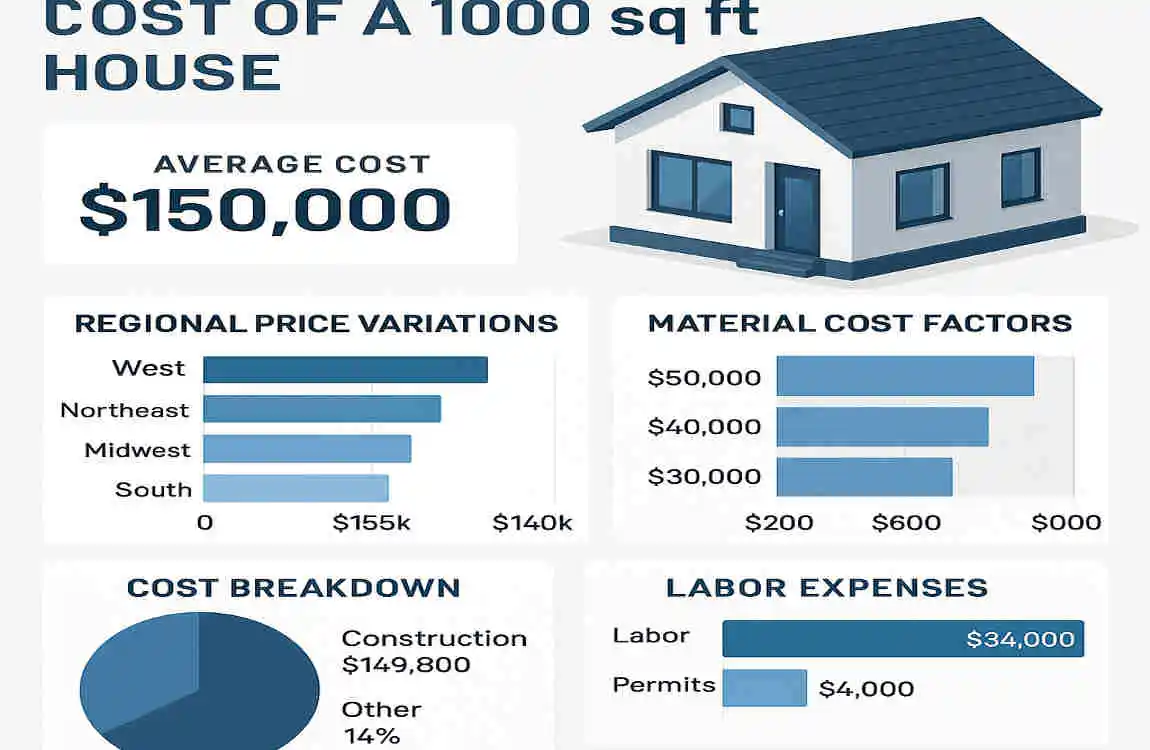
What Does a 1000 Sq Ft House Typically Include?
A 1,000 sq ft house is often classified as a small-to-medium-sized home. While the layout can vary, most houses of this size include:
- Two to three bedrooms
- One or two bathrooms
- An open-concept living and dining area
- A kitchen and possibly a small utility space
The design and layout can vary widely depending on whether the house is single- or multi-story.
Advantages of Owning a 1000 Sq Ft House
If you’re wondering if a 1000 sq ft house could meet your needs, here are some key benefits:
- Cost-Effective: Smaller homes typically come with lower construction or purchase costs.
- Easy Maintenance: Cleaning and maintaining a 1000 sq ft home is far easier than maintaining a larger house.
- Energy Efficiency: Heating and cooling a smaller space can lead to significant savings on utility bills.
- Versatility: These homes are perfect for small families, first-time buyers, or even as vacation homes.
Common Uses for a 1000 Sq Ft Home
These homes are popular for a variety of purposes:
- Starter Homes: Ideal for young couples or small families.
- Vacation Homes: A cozy retreat for occasional use.
- Rental Properties: Perfect for generating rental income due to their affordability.
Factors Influencing the Cost of a 1000 Sq Ft House
The price of a 1000 sq ft house can vary significantly based on several factors. Below are the key elements that impact the cost:
Location, Location, Location
The geographical area plays the most significant role in pricing. Houses in urban areas or high-demand neighborhoods will cost more than those in rural or less developed regions. Additionally, proximity to schools, hospitals, and public transport increases the value.
Construction Materials and Quality
The type and quality of materials used extensively influence the cost. For example:
- Premium materials like hardwood flooring or granite countertops will raise the price.
- Cost-efficient options like laminate flooring or vinyl finishes can reduce expenses.
Type of House: Single-Story vs. Multi-Story
A single-story house is generally less expensive to build because it requires fewer structural elements. However, multi-story homes may offer more living space on smaller lots.
Labor Costs
Labor costs can vary by region. Areas with a higher cost of living or specialized labor demands may result in higher construction costs.
Customization and Architectural Design
Custom designs, unique layouts, or specialized architectural features (e.g., vaulted ceilings or built-in shelving) can add to the overall cost.
Government Regulations and Fees
Building permits, inspection fees, and compliance with local zoning laws can add several thousand dollars to the total cost.
Utilities and Infrastructure
Costs for utilities like water, electricity, and gas hookups, as well as infrastructure such as driveways and septic systems, can vary by location and land conditions.
Average Cost Breakdown by Region
The cost of a 1000 sq ft house varies widely across the United States. Below is a breakdown of average prices by region:
Region Average Cost Range Urban vs. Suburban
Northeast $150,000 – $250,000 Urban areas tend to be pricier due to higher land values.
Midwest $120,000 – $200,000 Generally more affordable, especially in rural areas.
South: $100,000-$180,000. Suburban developments are often cheaper.
West Coast $200,000 – $400,000 Urban areas like Los Angeles significantly drive up costs.
Urban areas, as expected, are significantly more expensive than suburban or rural regions due to higher land and labor costs.
Cost to Build vs. Cost to Buy a 1000 Sq Ft House
Building a 1000 Sq Ft House
Building a home allows for customization, but it can be time-consuming. Here are the key costs associated with construction:
- Materials: $50,000 – $100,000
- Labor: $30,000 – $60,000
- Permits and Fees: $5,000 – $10,000
- Miscellaneous Expenses: $10,000 – $20,000
Buying a 1000 Sq Ft House
Purchasing an existing home is quicker but may limit customization. Market prices vary based on location, condition, and demand. Prices typically range from $100,000 to $300,000.
Pros and Cons of Building vs. Buying
Aspect Building Buying
Customization: Full control over design. Limited to existing features.
Timeline: Longer construction period. Move-in ready.
Cost: Potentially higher upfront costs. Often more affordable, depending on the market.
Hidden Costs and Additional Expenses to Consider
When budgeting for a 1000 sq ft house, don’t forget these often-overlooked expenses:
- Property Taxes: Varies by state and local regulations.
- Home Insurance: Protects against damage or disasters.
- Maintenance and Repairs: Annual upkeep costs can add up.
- Utility Setup: Installation of water, electricity, and internet lines.
- Homeowners Association Fees: Applicable in specific neighborhoods.
- Moving and Furnishing Costs: Furniture, appliances, and décor expenses.
Cost-Saving Tips and Strategies
Want to save money on your 1000 sq ft house? Here’s how:
- Opt for Simpler Designs: Avoid complex layouts and stick to efficient designs.
- DIY Where Possible: Take on smaller projects, such as painting or landscaping.
- Choose Affordable Materials: Look for budget-friendly yet durable options.
- Hire Reputable Contractors: Experienced professionals can avoid costly mistakes.
- Negotiate Prices: Always negotiate construction costs or purchase prices.
Trends Affecting the Cost of Small Homes in 2025
The housing market in 2025 is shaped by a few key trends:
- Inflation and Supply Chain Issues: Material costs are rising due to global economic pressures.
- Sustainable Homes: Demand for eco-friendly and energy-efficient homes is driving up prices.
- Smart Home Technology: The integration of automation and smart devices increases overall expenses.
- Design Trends: Open floor plans and multifunctional spaces are increasingly popular.
Case Studies: Real Examples of 1000 Sq Ft House Costs
Urban 1000 Sq Ft House
- Location: New York City
- Price: $300,000
- Insights: High land values and Premium materials increased the cost.
Suburban Newly Built Home
- Location: Texas suburbs
- Price: $180,000
- Insights: Opting for cost-efficient materials helped save money.
Rural Home with Renovation Costs
- Location: Rural Ohio
- Price: $120,000 ($90,000 purchase + $30,000 renovations)
- Insights: Renovating an older home can be a budget-friendly option.

